
Khadakwasla Dam is a dam on the Mutha River 21 km (13 mi) from the centre of the city of Pune in Maharashtra, India. The dam created a reservoir known as Khadakwasla Lake which is the main source of water for Pune and its suburbs.

The Daman Ganga also called Dawan River is a river in western India. The river's headwaters are on the western slope of the Western Ghats range, and it flows west into the Arabian Sea. The river flows through Maharashtra and Gujarat states, as well as the Union territory of Dadra and Nagar Haveli and Daman and Diu. The industrial towns of Vapi, Dadra and Silvassa lie on the north bank of the river, and the town of Daman occupies both banks of the river's estuary.
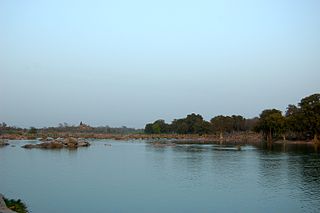
The Betwa is a river in Central and Northern India, and a tributary of the Yamuna. It rises in the Vindhya Range (Raisen) just north of Hoshangabad (Narmadapuram) in Madhya Pradesh and flows northeast through Madhya Pradesh and Orchha to Uttar Pradesh. Nearly half of its course, which is not navigable, runs over the Malwa Plateau. The confluence of the Betwa and the Yamuna rivers is in Hamirpur district in Uttar Pradesh.

The Indian Rivers Inter-link is a proposed large-scale civil engineering project that aims to effectively manage water resources in India by linking Indian rivers by a network of reservoirs and canals to enhance irrigation and groundwater recharge, reduce persistent floods in some parts and water shortages in other parts of India. India accounts for 18% of the world population and about 4% of the world’s water resources. One of the solutions to solve the country’s water woes is to link rivers and lakes.
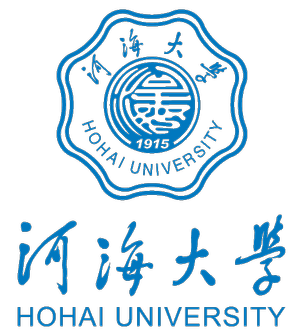
Hohai University is a public university in Nanjing, Jiangsu, China. It is affiliated with the Ministry of Education of China, and co-sponsored by the Ministry of Education, the Ministry of Water Resources, the State Oceanic Administration, and the Jiangsu Provincial People's Government. The university is part of Project 211 and the Double First Class University Plan.

Malampuzha Dam is the second largest dam and reservoirs in Kerala, located near Palakkad, in the state of Kerala in South India, built post independence by the then Madras state. Situated in the scenic hills of the Western Ghats in the background it is a combination of a masonry dam with a length of 1,849 metres and an earthen dam with a length of 220 metres making it the longest dam in the state. The dam is 355 feet high and crosses the Malampuzha River, a tributary of Bharathappuzha, Kerala's second longest river. There is a network of two canal systems that serve the dam's reservoir of 42,090 hectares.

The ongoing pollution of the Ganges, the largest river in the Indian subcontinent, poses a significant threat to human health and the environment. The river, which is severely polluted with human waste and industrial contaminants, provides water to about 40% of India's population across 11 states, serving an estimated population of 500 million people, more than any other river in the world.
The Ministry of Water Resources, River Development and Ganga Rejuvenation was the apex body for formulation and administration of rules and regulations relating to the development and regulation of the water resources in India. The Ministry was formed in January 1985 following the bifurcation of the then Ministry of Irrigation and Power, when the Department of Irrigation was re-constituted as the Ministry of Water Resources. In July 2014, the Ministry was renamed to “Ministry of Water Resources, River Development & Ganga Rejuvenation”, making it the National Ganga River Basin Authority for conservation, development, management, and abatement of pollution in the river Ganges and its tributaries. In May 2019, this ministry was merged with the Ministry of Drinking Water and Sanitation to form the Ministry of Jal Shakti.

Guru das Agrawal, also known as Sant Swami Sanand and Sant Swami Gyan Swaroop Sanand, was an Indian environmentalist, engineer, religious leader, monk, and professor. He was the Patron of Ganga Mahasabha, founded by Madan Mohan Malviya in 1905.
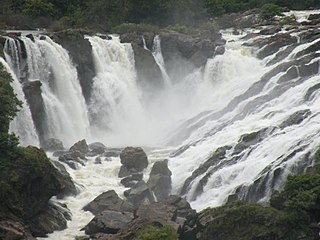
India is 5th globally for installed hydroelectric power capacity. As of 31 March 2020, India's installed utility-scale hydroelectric capacity was 46,000 MW, or 12.3% of its total utility power generation capacity. Additional smaller hydroelectric power units with a total capacity of 4,683 MW have been installed. India's hydroelectric power potential is estimated at 148,700 MW at 60% load factor. In the fiscal year 2019–20, the total hydroelectric power generated in India was 156 TWh with an average capacity factor of 38.71%.
National Ganga River Basin Authority (NGRBA) is a financing, planning, implementing, monitoring and coordinating authority for the Ganges River, functioning under the Ministry of Jal Shakti, of India. The mission of the organisation is to safeguard the drainage basin which feeds water into the Ganges by protecting it from pollution or overuse. In July 2014, the NGRBA was transferred from the Ministry of Environment and Forests to the Ministry of Water Resources, River Development & Ganga Rejuvenation, formerly the Ministry of Water Resources (India).

Water pollution is a major environmental issue in India. The largest source of water pollution in India is untreated sewage. Other sources of pollution include agricultural runoff and unregulated small-scale industry. Most rivers, lakes and surface water in India are polluted due to industries, untreated sewage and solid wastes. Although the average annual precipitation in India is about 4000 billion cubic metres, only about 1122 billion cubic metres of water resources are available for utilization due to lack of infrastructure. Much of this water is unsafe, because pollution degrades water quality. Water pollution severely limits the amount of water available to Indian consumers, its industry and its agriculture.
WAPCOS Limited, earlier known as Water and Power Consultancy Services (India) Limited, is an Indian consultancy service provider under the ownership of the Government of India and administrative control of the Ministry of Jal Shakti. The firm provides consultancy services in the fields of water resources, power and infrastructure. Launched in 1969, it is a "Mini Ratna" company with several projects across India, Asia and Africa.
Water scarcity in India is an ongoing water crisis that affects nearly hundreds of million of people each year. In addition to affecting the huge rural and urban population, the water scarcity in India also extensively affects the ecosystem and agriculture. India has only 4% of the world's fresh water resources despite a population of over 1.4 billion people. In addition to the disproportionate availability of freshwater, water scarcity in India also results from drying up of rivers and their reservoirs in the summer months, right before the onset of the monsoons throughout the country. The crisis has especially worsened in the recent years due to climate change which results in delayed monsoons, consequently drying out reservoirs in several regions. Other factors attributed to the shortage of water in India are a lack of proper infrastructure and government oversight and unchecked water pollution.

Ravindra Kumar Sinha is a Padma Shri awarded Indian biologist and environmentalist. He served as Vice-Chancellor of Shri Mata Vaishno Devi University from 2019-2023 and also served in Nalanda Open University. Previously he was the Head of the Department of Zoology at Patna University, and is a pioneer researcher and wildlife conservationist, famous for his efforts for the conservation of Gangetic Dolphins, he is popularly known as the "Dolphin Man of India".
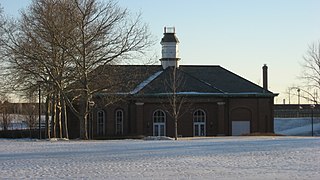
West Washington Street Pumping Station is a historic pumping station located at Indianapolis, Indiana. It was built in 1870, and is a one-story, rectangular brick building. It was modified to its present form after 1909, and is 2/3 of its original size. It has a slate hipped roof topped by a square central tower and features distinctive brick detailing, and arched openings. The building served as the city's only water pumping station until 1890.

Ministry of Jal Shakti is a ministry under Government of India which was formed in May 2019 under the second Modi ministry. This was formed by merging of two ministries; Ministry of Water Resources, River Development & Ganga Rejuvenation and Ministry of Drinking Water and Sanitation.
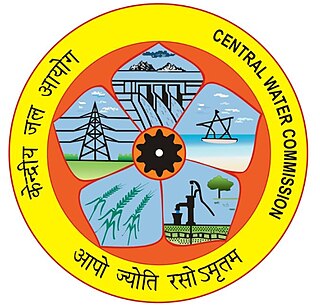
Central Water Commission (CWC) is a premier Technical Organization of India in the field of Water Resources and is presently functioning as an attached office of the Department of Water Resources, River Development and Ganga Rejuvenation, Ministry of Jal Shakti, Government of India. The Commission is entrusted with the general responsibilities of initiating, coordinating and furthering in consultation of the State Governments concerned, schemes for control, conservation and utilization of water resources throughout the country, for purpose of Flood Control, Irrigation, Navigation, Drinking Water Supply and Hydro Power Development. It also undertakes the investigations, construction and execution of any such schemes as required.
Teesta Khangtse Glacier or Tista Khangtse Glacier is located in the north of Sikkim, India, in a region bordering Tibet. This valley glacier is the primary source of the Teesta River.
Lapalang is a village in the East Khasi Hills district, Meghalaya, India. As per 2011 Census of India, Lapalang has a population of 4,292 people with a literacy rate of 76.47%.















